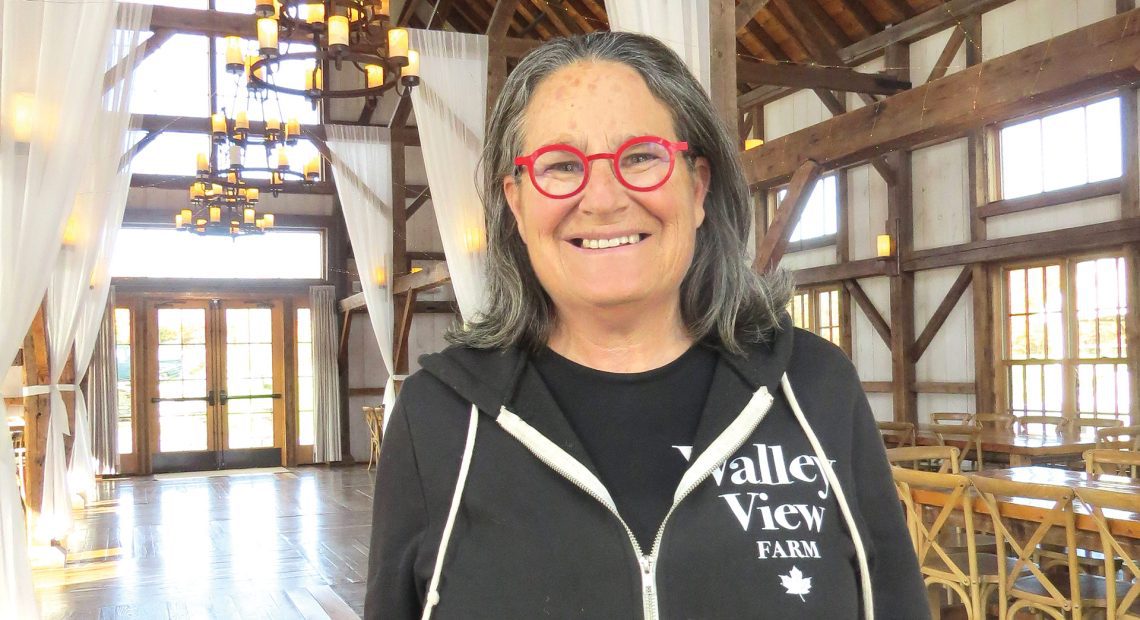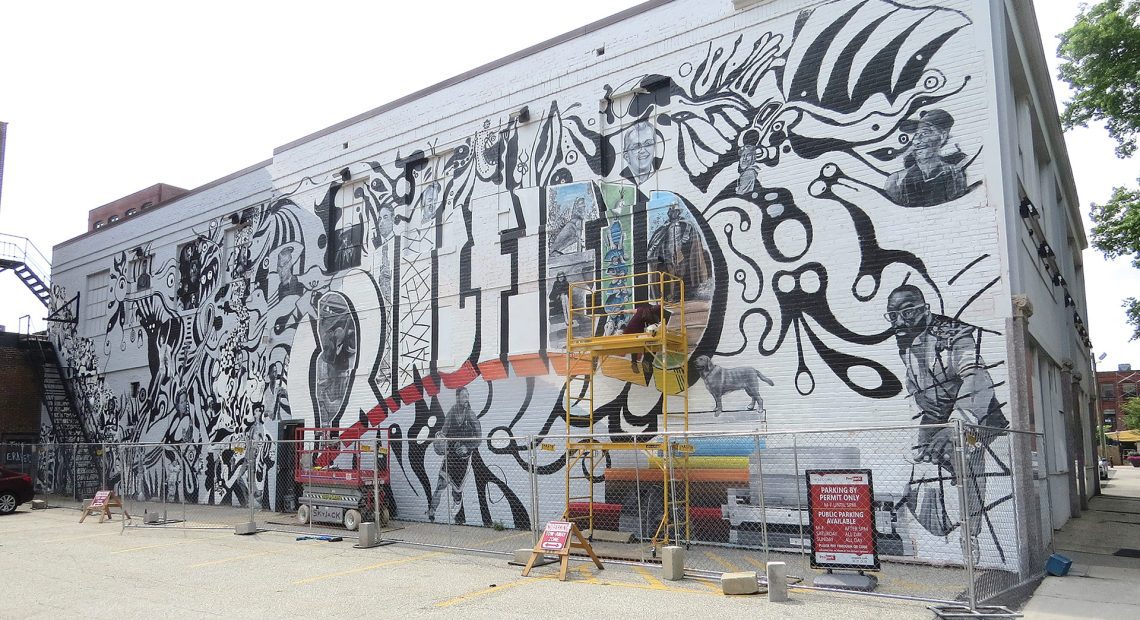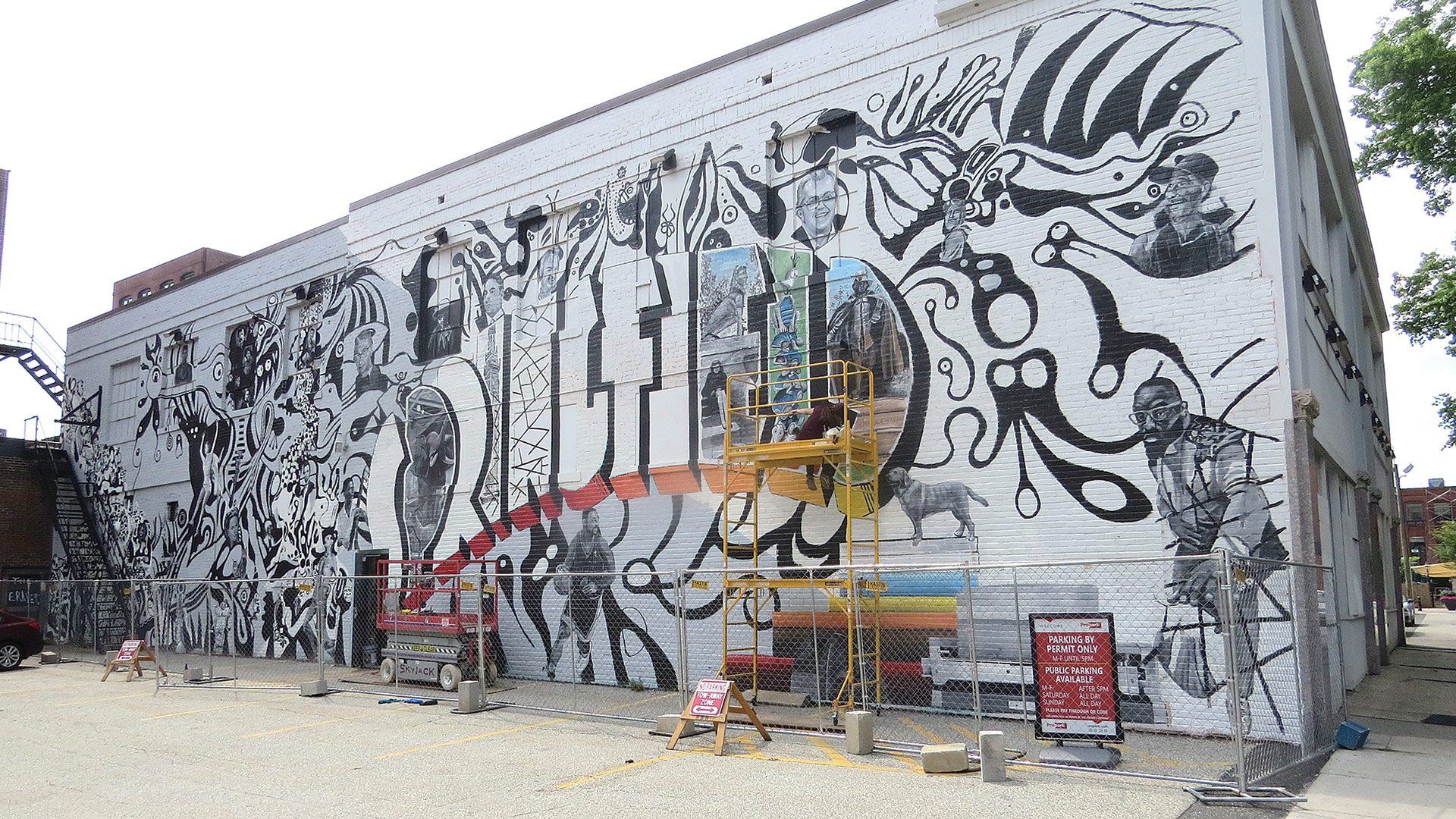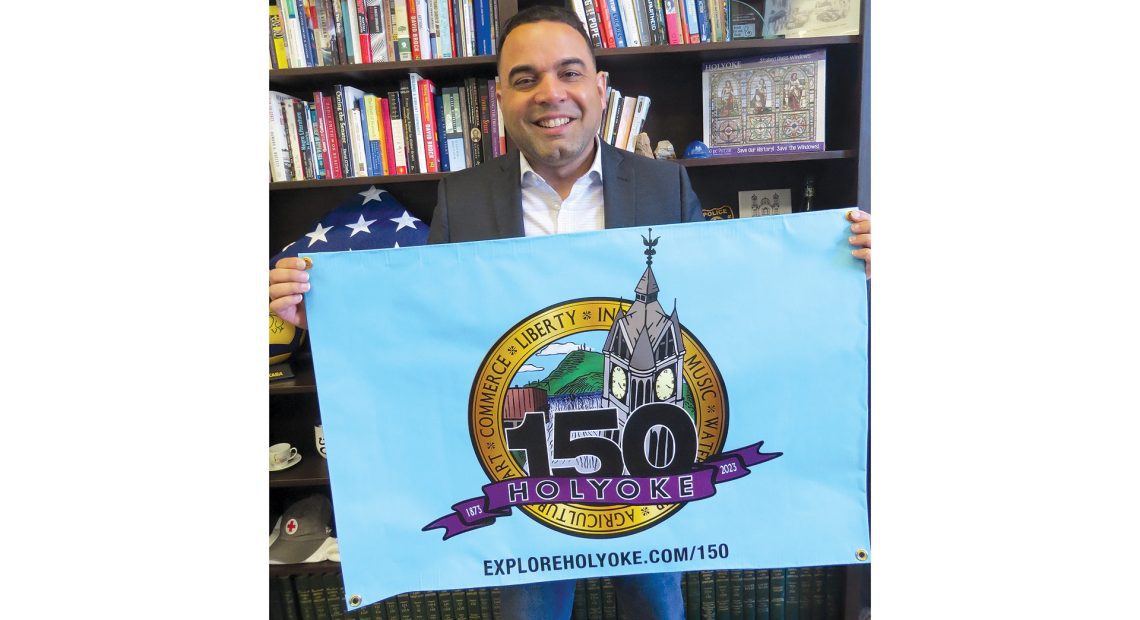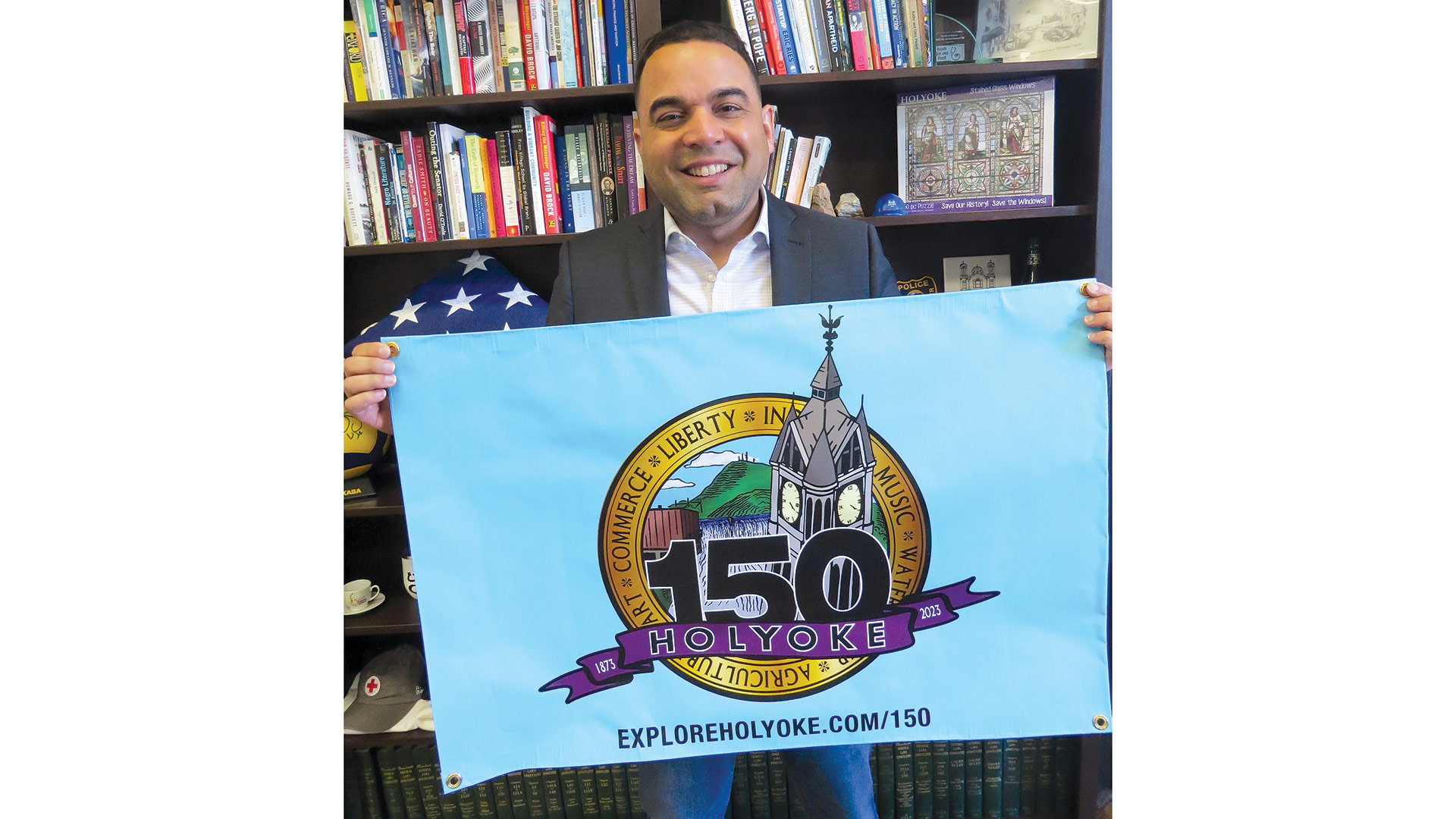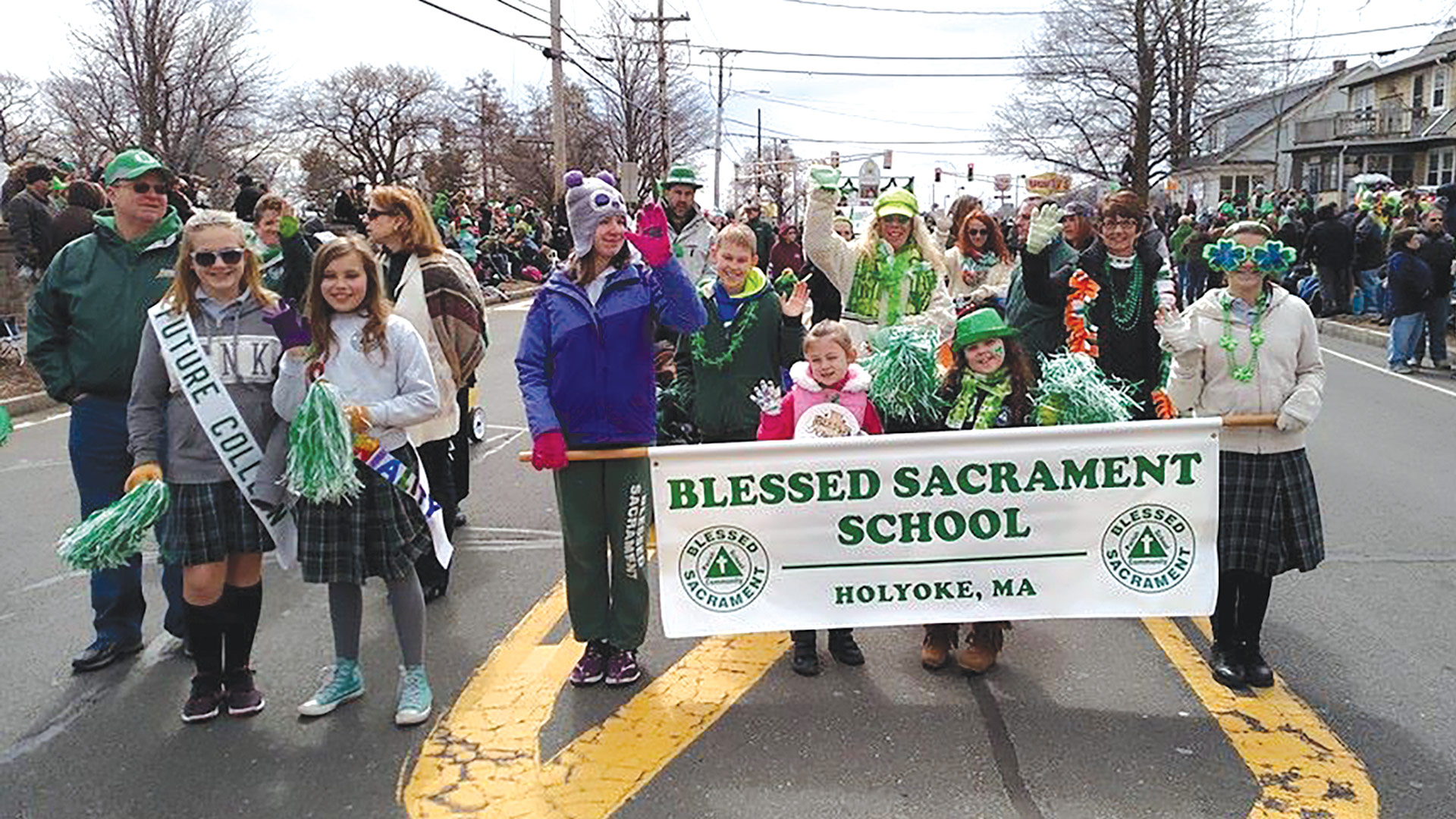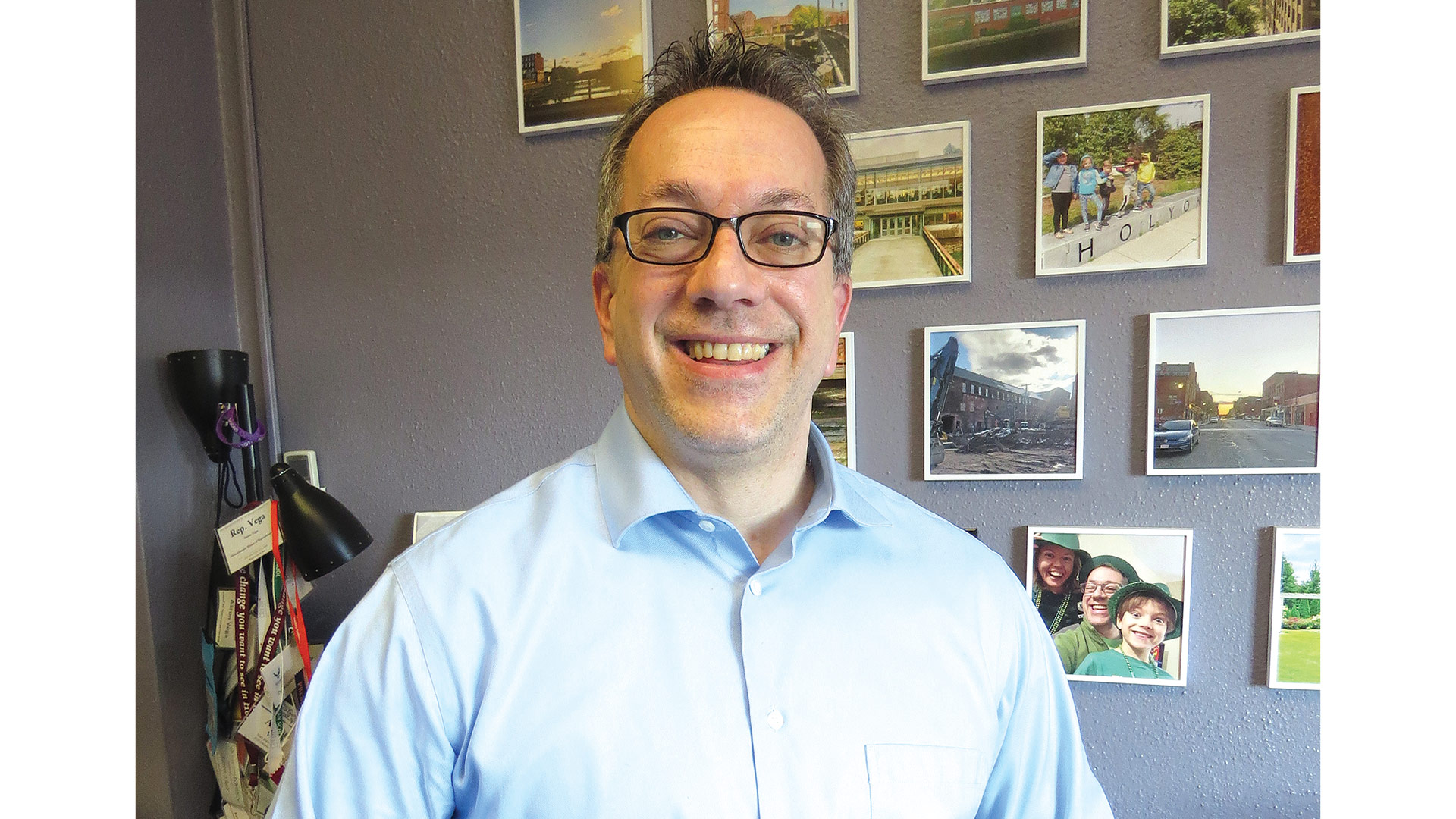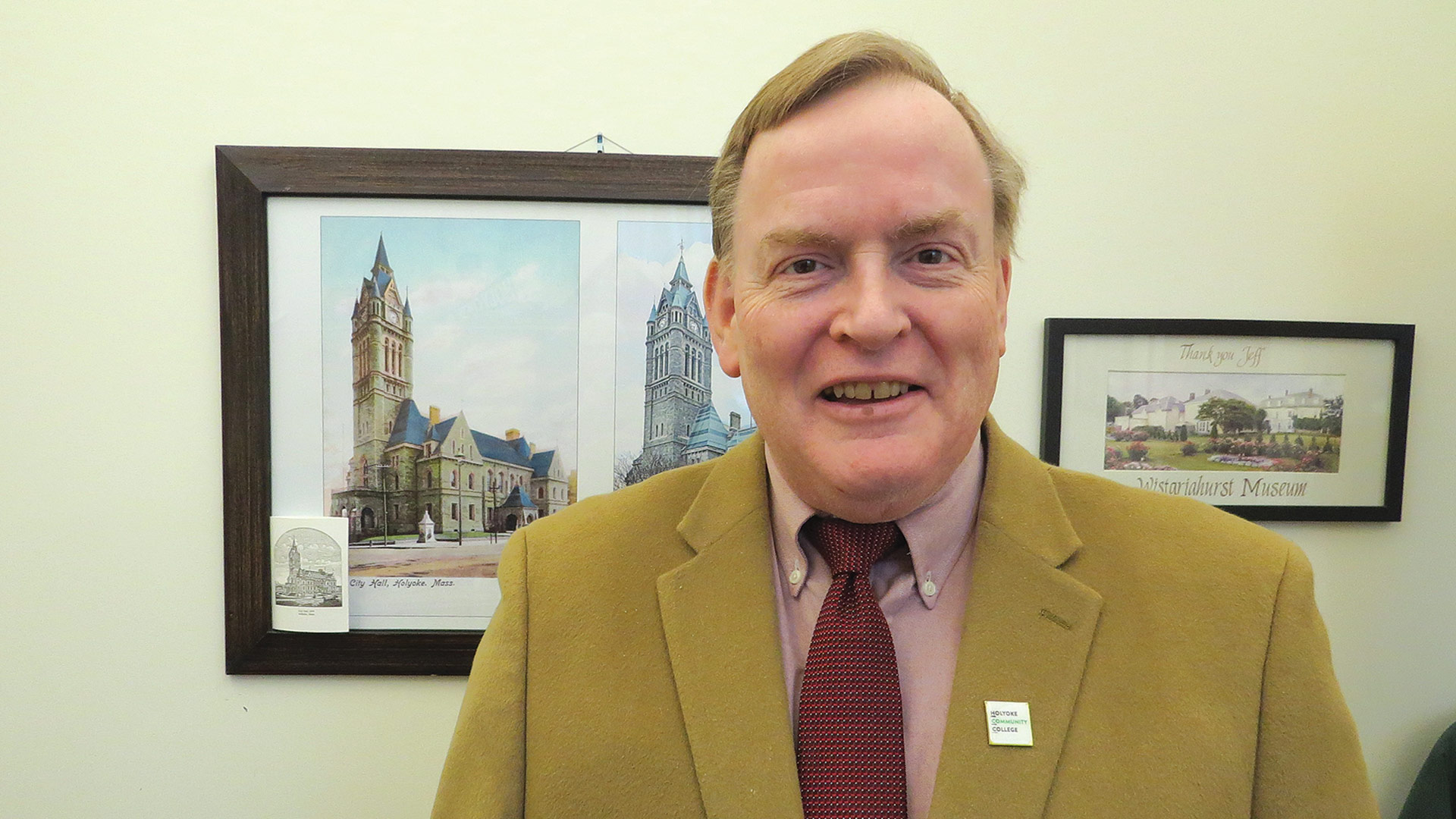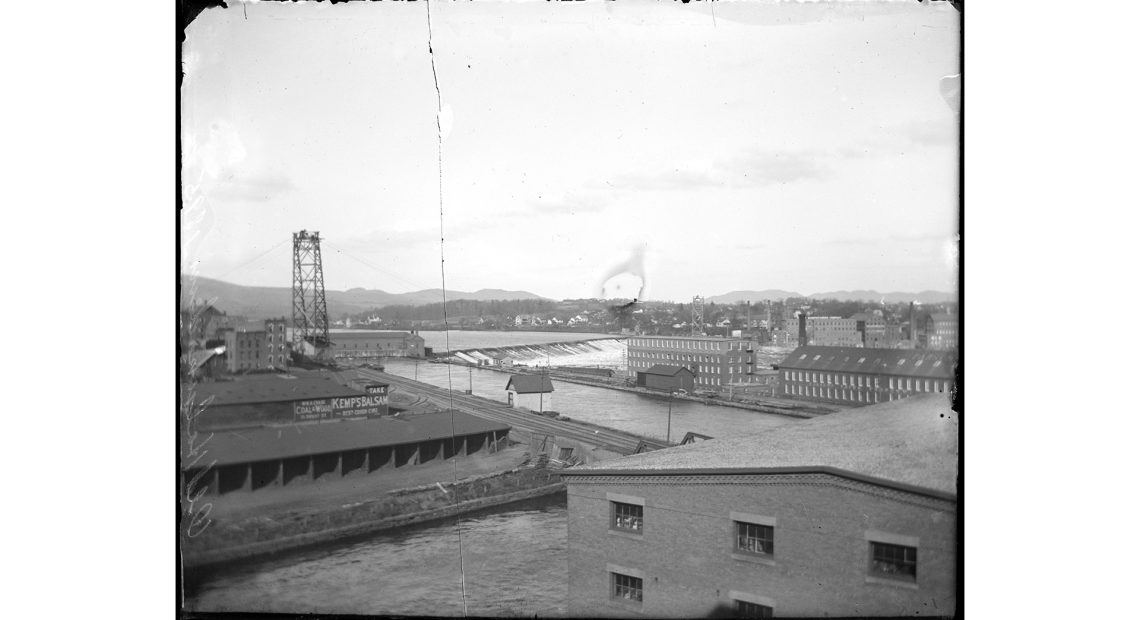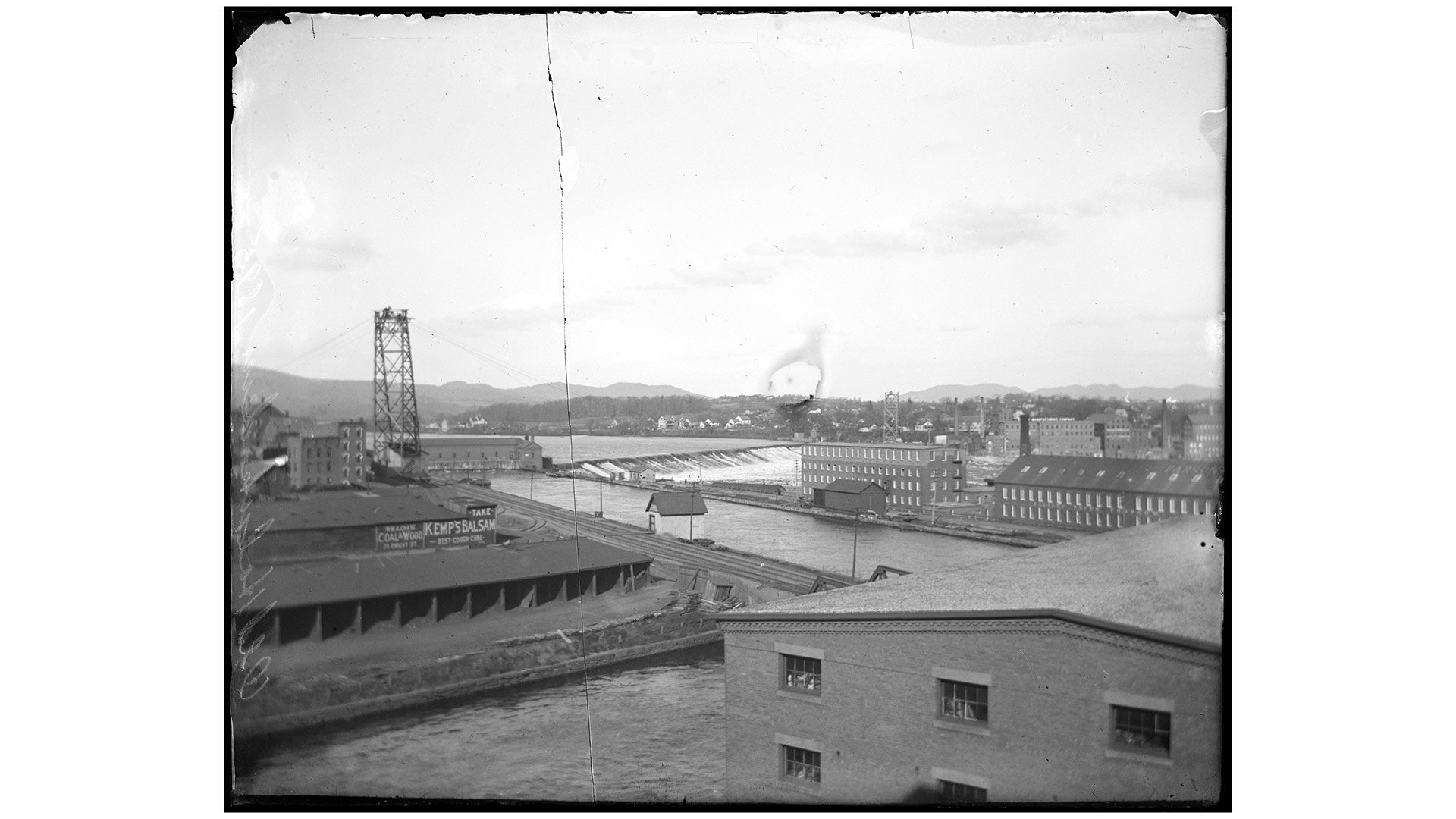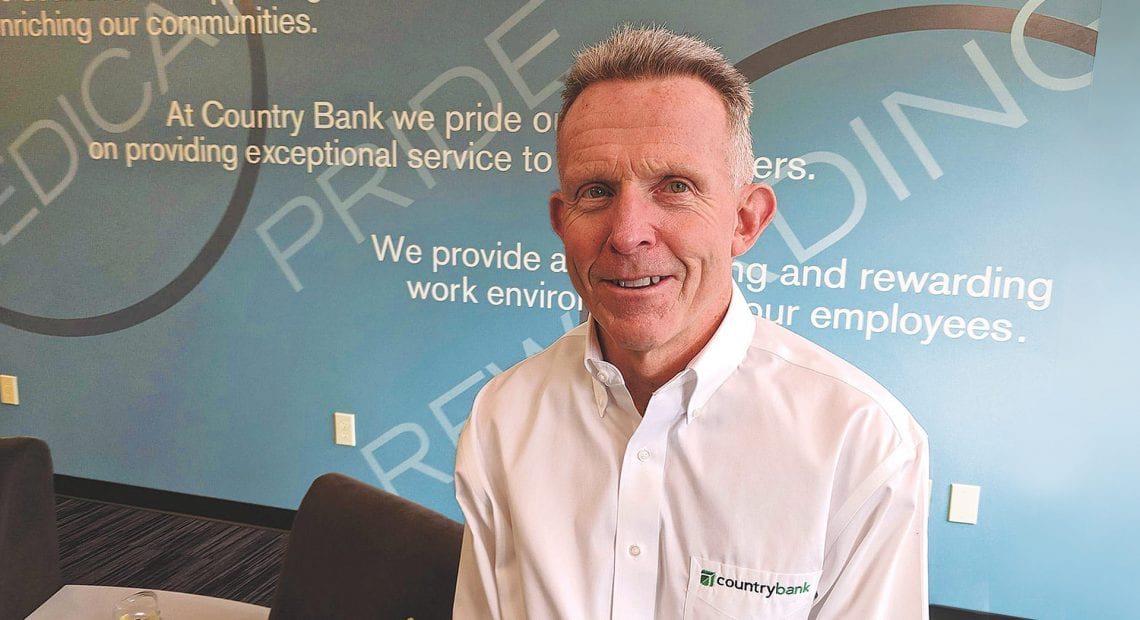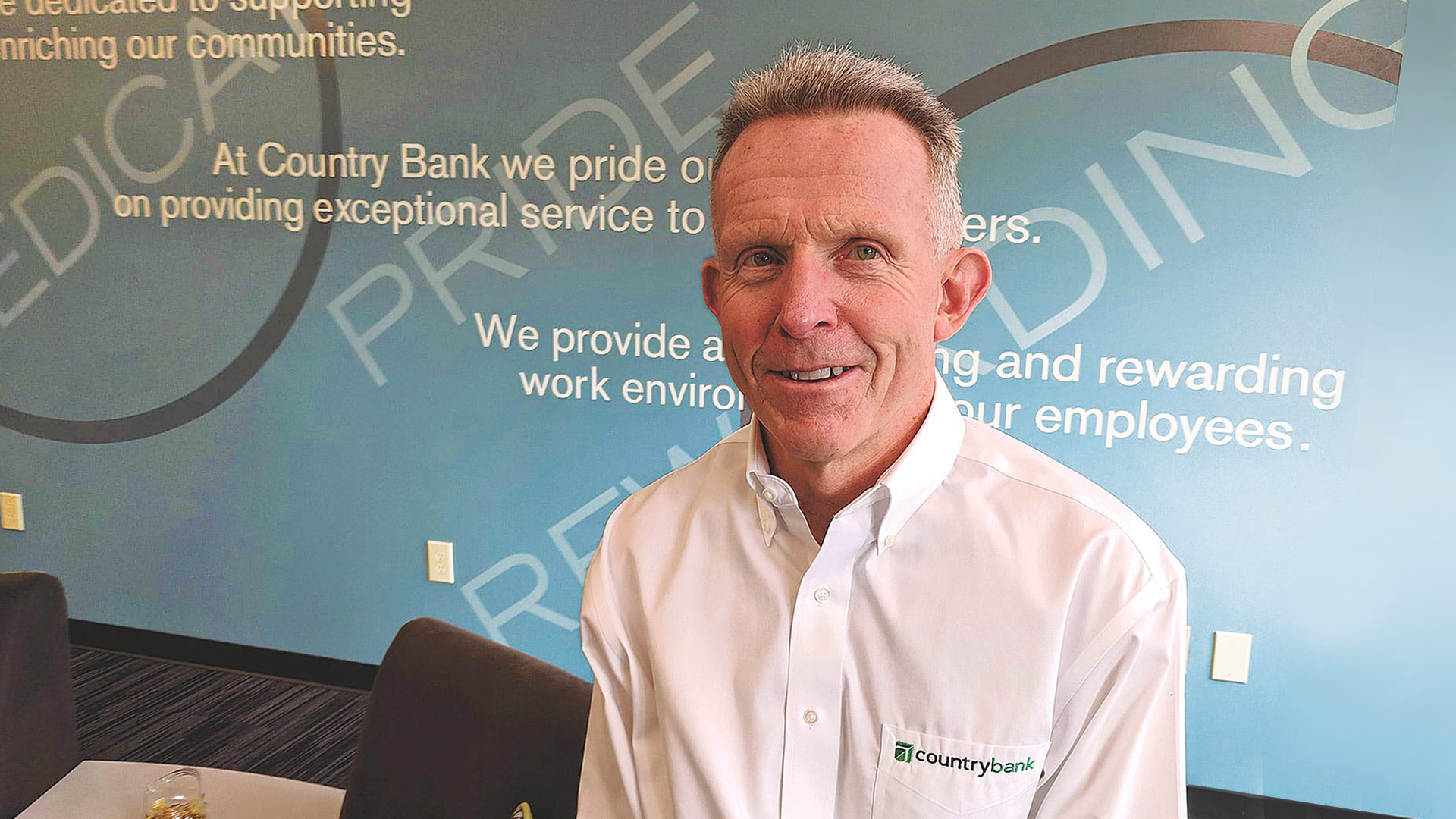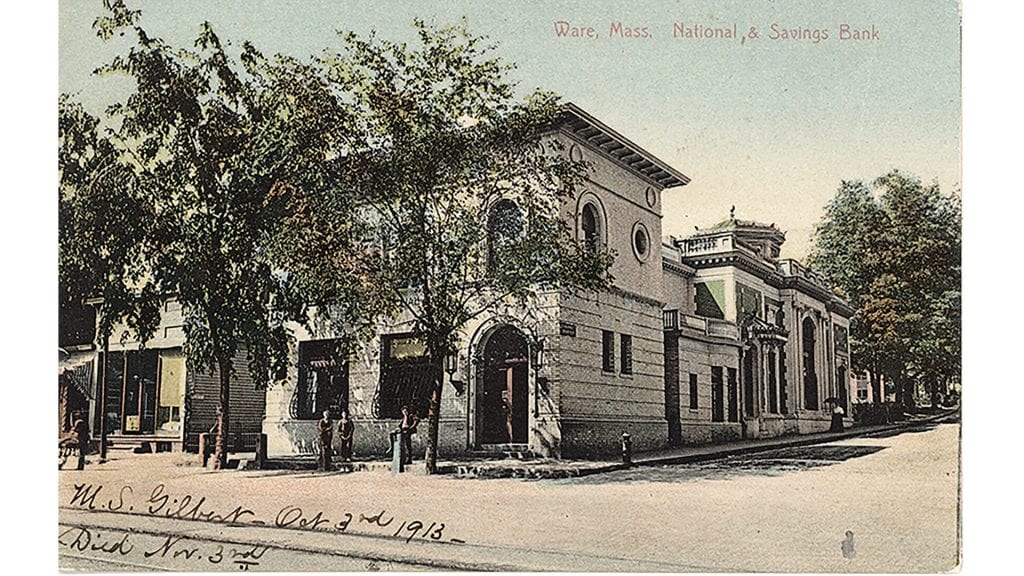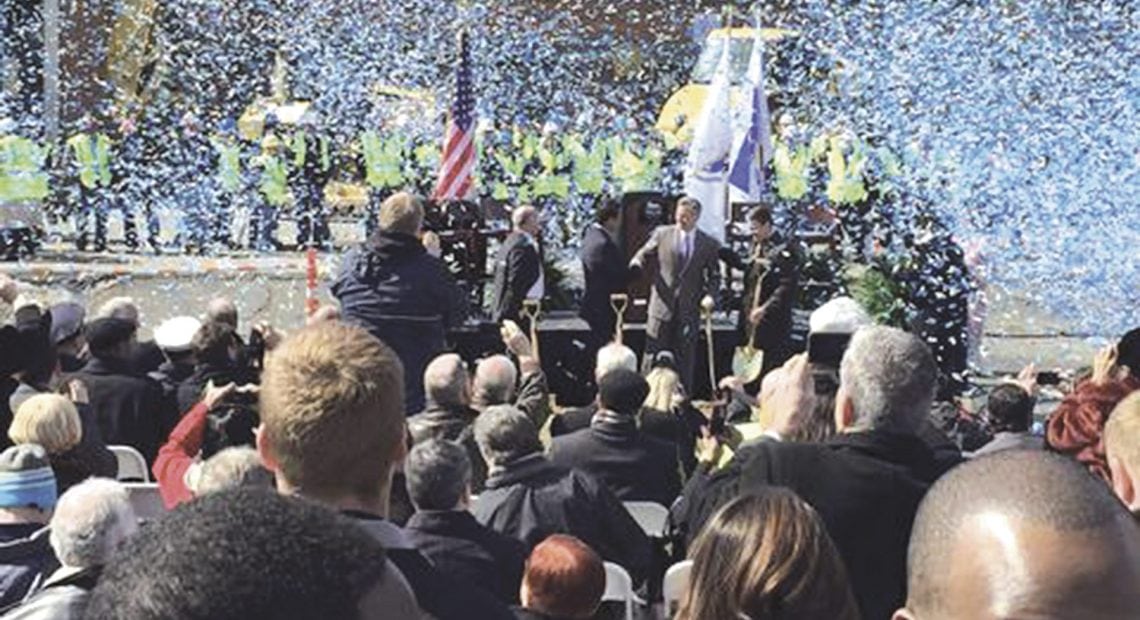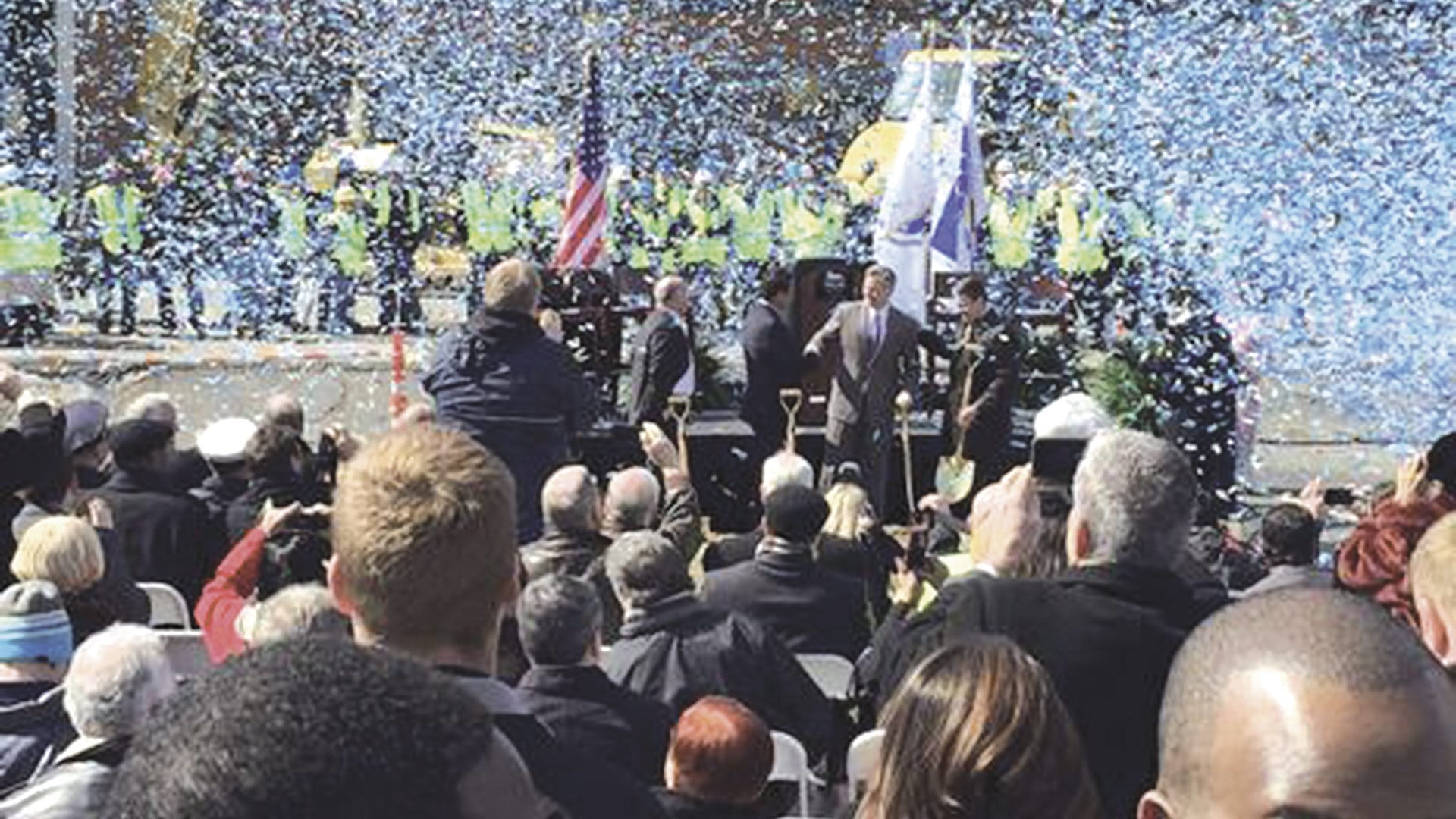It’s Become a Venue of Choice
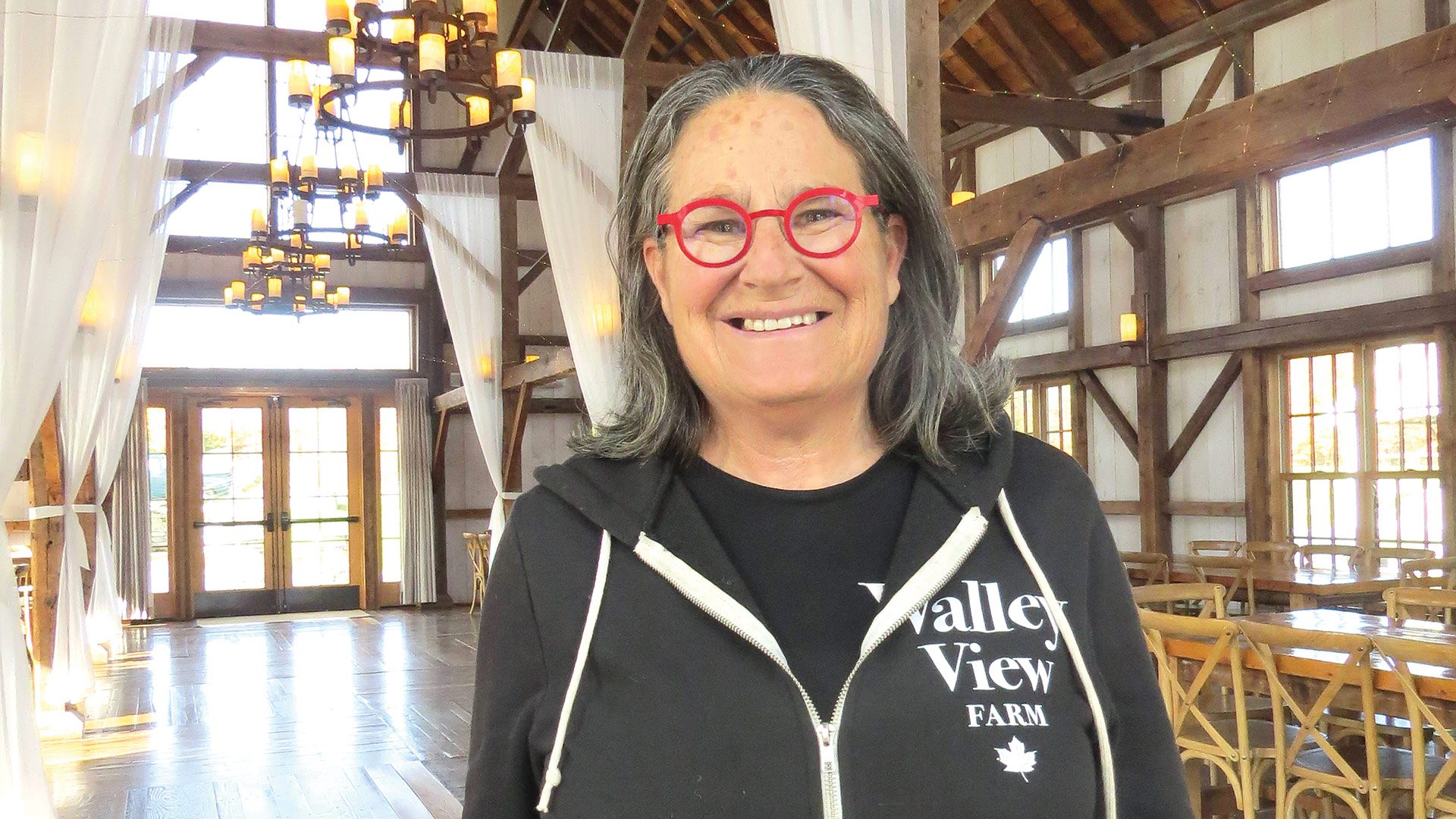
Suzy Fortgang in the Yellow Barn at Valley View Farm.
Suzy Fortgang says it took four full years to acquire the horse barn on the grounds of the Berkshire Hills Music Academy in South Hadley, disassemble it, and put it back together at what is now known as Valley View Farm in Haydenville.
“We were looking for a barn, we found it, and we took it down piece by piece,” she recalled. “It was a laborious process; every piece, some of them 40 feet long, was tagged, taken apart like a LEGO, and moved … luckily, we had drawn a good diagram so we could put it back together.”
And when asked about the price tag for doing all that, she said simply, “I don’t want to think about it; I never wanted to add it up.”
But she thinks often about how that cost, and all that hard work, were certainly well worth it.
Indeed, what’s known as the ‘Yellow Barn,’ built by the son of silk magnate William Skinner for his daughter, has become the centerpiece, — figuratively, but also quite literally — of a multi-faceted operation at the farm, shaped over the past several years by Fortgang and her husband, David Nehring, and especially its thriving weddings and events business.
“It was a laborious process; every piece, some of them 40 feet long, was tagged, taken apart like a LEGO, and moved … luckily, we had drawn a good diagram so we could put it back together.”
Fortgang, a psychotherapist by trade, said the venue hosts roughly 80 weddings a year, in addition to a variety of other events, from fundraisers for nonprofits to retirement and birthday parties to a few holiday gatherings, with the obvious goal of doing more of all of the above.
The site has become an increasingly popular venue for weddings, drawing couples from an ever-wider geographic circle, but especially from across New England, New York State, and, increasingly, New York City.
Indeed, as she talked with BusinessWest, Fortgang recapped a wedding the previous weekend involving a couple from Brooklyn, with most family and friends coming from in or around Gotham.
“They don’t get to experience this much — being outdoors and being in nature and eating local food,” she said, referring to the broad experience that Valley View provides. “It’s a gift that you can give to your guests.”
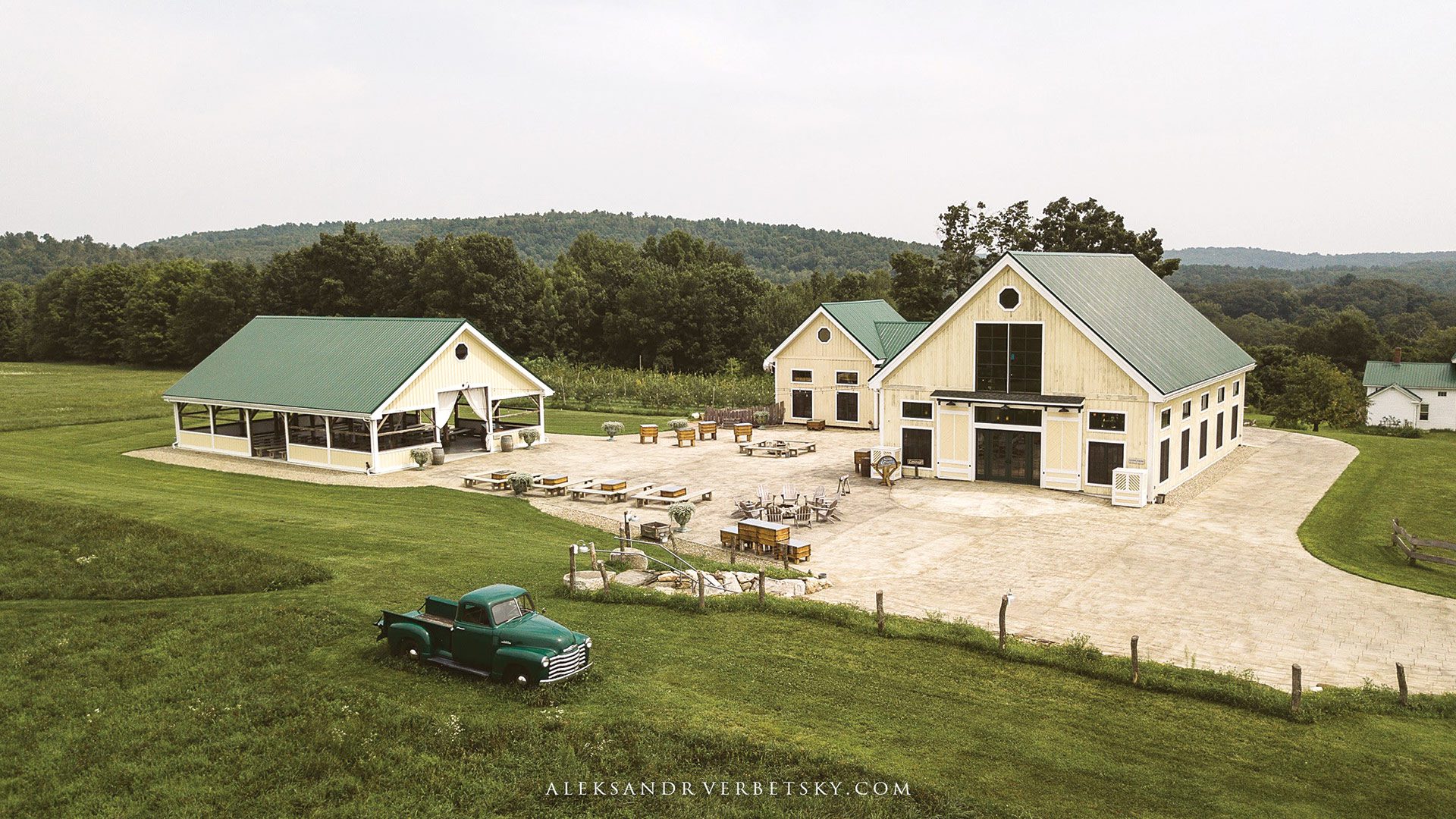
Valley View is a working farm, but also a true destination and venue for many different kinds of events.
Photo by Aleksandr Verbetsky
Indeed, those hosting these events — and those who attend them — are treated to a site that blends scenic beauty with some history, especially in the form of that barn (more on that later), hard cider (another important piece of the business plan), and some spectacular views.
“We now make a living hosting weddings and other events,” said Fortgang, adding that this component of the business started coming together just seven years ago. “And I think we’ve risen to become one of the most popular venues in New England.”
As noted earlier, this is, indeed, a multi-faceted operation. Fortgang and Nehring grow a number of crops, from apples and peaches to blueberries and a variety of vegetables. They also produce maple syrup, raise chickens and sell eggs. And several years ago, they started making hard cider and eventually opened the Muse Cider Bar, a destination unto itself that is open to the public on nights when there are no events.
“We now make a living hosting weddings and other events. And I think we’ve risen to become one of the most popular venues in New England.”
For this issue and its focus on holiday party planning, BusinessWest visited Valley View Farm and gained a full appreciation for how it has become a true destination, and in many different respects.
Story Material
Getting back to that barn…
It’s not just the painstakingly laborious process of taking it down and reassembling it that makes its new home and purpose so significant, although that’s a remarkable story in its own right. It’s also where it’s located.
Indeed, the farm now sits just a few hundred yards from where the original Skinner silk mill was located in Haydenville, then known as as the Unquomonk Silk Company. That mill, which was uninsured, was destroyed by the Mill River Flood of 1874, with Skinner eventually rebuilding in Holyoke in what became one of the best business comeback stories ever recorded.
“It just felt right to bring it back to Haydenville,” said Fortgang, adding that the barn had been condemned and was due to be demolished by Berkshire Hills when she and Nehring, who previously owned a small engine-repair shop in Northampton, stepped in to rescue it.
That was a few years after they had acquired the property in 2013, outbidding, by a dollar, a developer who planned to build condominiums on the site.
“We bought it with the intention of farming,” she recalled. “We wanted land … we both loved the outdoors. He wanted to farm — he grew up on a farm.”
Originally a dairy farm but also an orchard, the property had not been farmed for many years, she went on, adding that they gradually added facilities, crops, and revenue streams. The farm is now home to more than 250 fruit trees, including vintage apple trees with heirloom varieties. Maple sugaring and cider production were soon added, and while doing all that, Fortgang and Nehring conceptualized and advanced a secondary plan to convert the property into an events venue and destination.
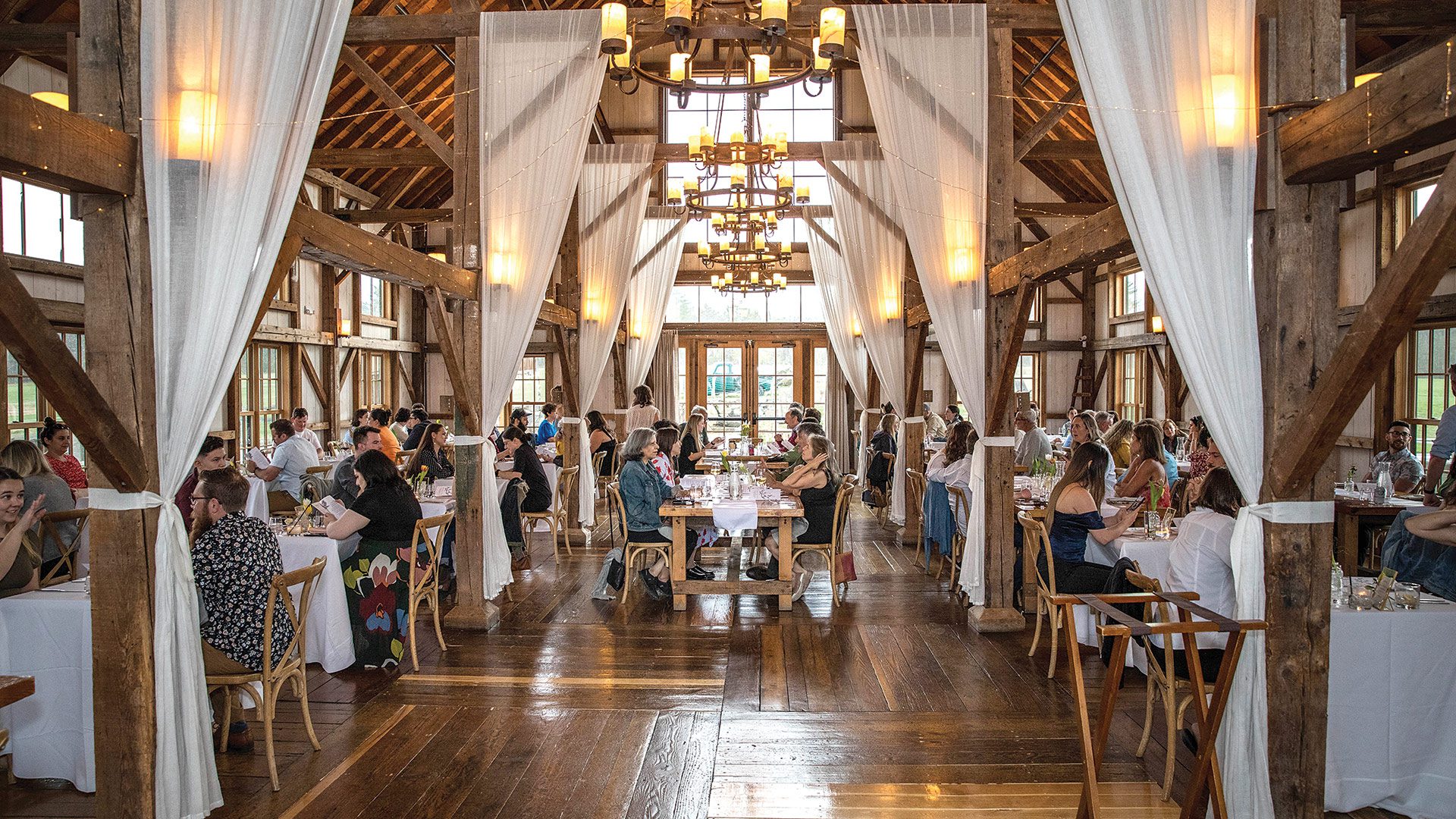
The Yellow Barn at Valley View Farm, carefully deconstructed and put together at the scenic property in Haydenville, has become a popular wedding venue.
“When we bought the land, it was in my mind to do all of this,” she said, gesturing with her hand to indicate everything from the main event space to a smaller barn converted into a pavilion, to the cider bar. “Because I interviewed all the farmers, I knew about how to make a living farming, and I couldn’t quite figure out how to do that without the history and the infrastructure.”
And the Yellow Barn become the focal point of that plan.
Featuring high ceilings, huge windows to let in sunlight and moonlight, and tables and chairs fashioned from boards from a secondary floor, it is open for events year-round — it’s heated and air-conditioned — and blends history and culture with today’s conveniences.
“It has all the amenities of a modern venue, but it also has the history and charm of being an old horse barn,” said Fortgang, adding that it also features some unique spaces, such as the ‘Love Nest.’ Located on the second floor of the barn, it’s a private suite, decorated with antique furniture collected by Fortgang’s parents, that is used for photos, hair and makeup, and as a “romantic getaway.”
This blend of old, new, and historical, coupled with everything else on the property, from the views to the horses grazing in the nearby pasture to the hard cider, has quickly made Valley View a destination of choice for couples looking a different kind of wedding venue.
Fortgang said that perhaps 30% of the weddings involve people from this area. The rest are from across New England and New York and well beyond, making tiny Haydenville what could be considered a destination-wedding spot.
“We’re happy to get to know more people and share this beautiful place with them. This has become a place to come and celebrate … and we know how to throw a good party.”
Indeed, wedding parties and guests will often stay a night or two in hotels in neighboring Northampton and other communities, making Valley View an economic engine of sorts.
“They all stay in Northampton, they take a bus up here, and they spend the day here,” she explained. “Sometimes it’s kids who grew up here, but now they live in other parts of the country. We have New Yorkers, we have a lot of Brooklyn couples.
“Couples these days … when they’re looking for this aesthetic, they get on the internet, and they’re considering Vermont and Maine and Rhode Island, and all of New England, really,” she went on, adding that their search now often ends in Haydenville because of word-of-mouth referrals and the venue’s strong track record for excellence.
Indeed, 2024 is essentially sold out as far as weddings are concerned, she said, while bookings for 2025 and beyond are quite solid. The venue generally does three each weekend, with the pace of business slowing in the winter months, obviously.
Beyond weddings, Valley View also hosts different kinds of private functions in its various spaces — the Yellow Barn for larger gatherings, as it can accommodate up to 200 people, and a pavilion and patio (moved from the historic Hemenway Hill Farm a few miles away) and Muse Cider Bar for smaller functions.
It has hosted wedding anniversaries, bridal and baby showers, nonprofit fundraising events, retirement parties, family reunions, and some holiday parties as well, said Fortgang, adding that the business plan calls for building this side of the operation by creating more of those word-of-mouth referrals.
“We’re happy to get to know more people and share this beautiful place with them,” she went on. “This has become a place to come and celebrate … and we know how to throw a good party.”
Bottom Line
During COVID, when the wedding business screeched to a halt, Fortgang and Nehring still managed to put their facilities to use, creating a cocktail bar, called the Farm Bar, in the Yellow Barn, and actually handing out drinks through the windows to visitors from across the region — many of them desperate for something to do — before eventually moving the operation outdoors.
“It became a thing,” she said, adding that the farm became such a popular gathering spot for the public, it was decided to open the Muse Cider Bar on nights when there are no events.
“We’ll have a food truck down there and serve cocktails and cider,” she told BusinessWest, adding that this is just one of the ways in which Valley View has gone from being a celebrated part of Haydenville’s past to being a huge part of the community’s present and future.
And a destination — in every sense of that term.



